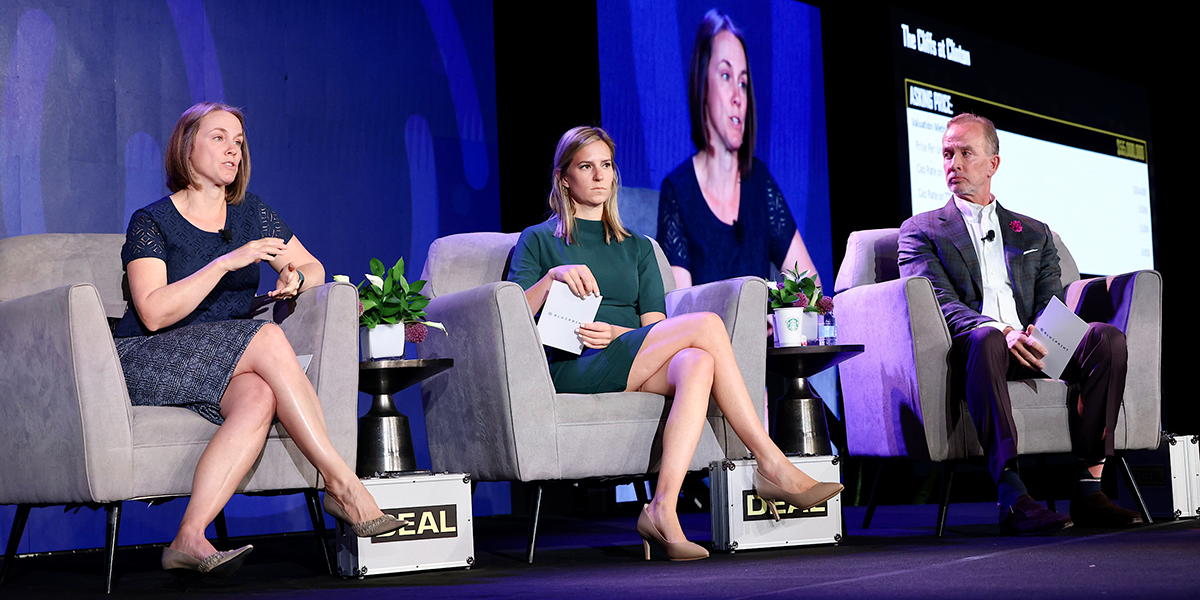This article originally appeared in the “Emerging Trends in Real Estate® 2023” report issued by the Urban Land Institute and PwC. Data cited in article as of original publish date; more current data may be available.
Major factors influencing senior housing continue to evolve. Some trends are well known while others are still developing. In 2022 and into 2023, trends for senior housing include the following:
- The growth of the sector into new product types differentiated by rate and service offerings as the sector continues to mature and evolve.
- The articulation of a new value proposition for senior housing as the proverbial “fountain of youth” for future baby boomer residents who seek a high quality of life, wellness, longevity, and purpose.
- The recognition that senior housing is truly part of the health care continuum.
- The gradual recovery of occupancy from the nadir reached during COVID-19, boosted by a recent slowdown in inventory growth and strong post-pandemic demand patterns.
- Outside exogenous factors including the national and global economies, inflation, and rising interest rates, which present new challenges for senior housing.
- Staff recruitment and retention as well as rising expenses associated with labor shortages, insurance, food, energy, and other goods and services. Collectively, these are squeezing operator margins, investment returns, and debt issuance.
- And, of course, U.S. demographic patterns, which are pushing greater numbers of individuals into the 75-plus cohort, creating a captive pool of potential new residents for senior housing.
- These and other topics will be further explored in this commentary.
Sector maturation. It is an exciting time in the senior living industry as the sector matures and product offerings become increasingly differentiated. Much like the hotel industry, with offerings from Motel 6 to the Ritz-Carlton, operators, developers, and capital providers are increasingly segmenting the senior housing market by both price point and service offerings. “Active adult” offers amenitized rental housing for the “younger old” cohort seeking community involvement, lifestyle, purpose, and connection. The “Forgotten Middle,” a term coined by the National Investment Center for Seniors Housing & Care (NIC) in its 2019 seminal study that assessed and quantified the need for more affordable housing and care options for middle-income seniors, offers care and housing options for the value-minded older adult consumer. And “ultra-luxury retirement communities” offer older adults high-end concierge lifestyle living options with wellness centers, five-star culinary options, entertainment, and A-list cultural events. And, of course, there remains the traditional senior housing product, with a price point that falls between the latter two and offers a value proposition of security, socialization, engagement, room and board, care coordination, and lifestyle
Wellness value proposition. Many operators are increasingly recognizing that senior housing provides an environment that can promote and support health and wellness, enticements to the baby boomers as they age and seek the proverbial “fountain of youth.” Further, the movement of many operators to incorporate wellness programs into their offerings has the ability to be a significant competitive advantage as potential residents seek communities that hold promise to improve the quality of their life through programs focused on the intellectual, physical, social, spiritual, vocational, emotional, and environmental dimensions of wellness as defined by the International Council on Active Aging (ICAA).
Senior housing as part of the continuum of care. Simply stated, senior housing operators influence social determinants of health for hundreds of thousands of older Americans. Operators can help manage chronic illness and keep older adults healthy—they have 24/7 eyes on residents and can systematically monitor changes in conditions. Properly managed, this can result in fewer resident hospitalizations, reduce federal and state-level health care spending, and act as a catalyst for future business opportunities and collaborations. Further, thoughtful care intervention can provide support to the overall health care ecosystem through the support and creation of conscientious awareness and follow-through. And, once senior housing is fully recognized as part of the health care continuum, senior housing operators will be able to participate in the revenue streams associated with a capitated risk-sharing model of care.
Tailwinds for occupancy recovery. There are two tailwinds supporting an ongoing occupancy recovery for senior housing. First, on the supply side, the number of senior housing units under construction in the second quarter of 2022 for the 31 NIC MAP Primary Markets was the fewest since 2015. And that pattern may remain in place—at least in the near term—because senior housing starts continue to linger at moderate levels and remain well below their peaks seen in the 2016–2018 period. This is because rising materials prices and inflation, labor shortages in the building trade industries, and the change in Fed policy of higher interest rates are collectively affecting plans for new development; many projects increasingly do not pencil out for reasonable returns.
Second, demand is also a tailwind for an ongoing improvement in occupancy. Indeed, demand, as measured by the change in occupied inventory or net absorption, was robust in the second quarter of 2022, increasing at its strongest pace ever recorded by NIC MAP Vision except for the post-pandemic boost in demand in the last half of 2021. Since the recovery began in the second quarter of 2021, 78 percent of the units placed back on the market have been reoccupied.
As a result of these conditions, the occupancy rate for seniors housing—where seniors housing is defined as the combination of the majority independent living and assisted living properties—rose 0.9 percentage point during the second quarter of 2022 to 81.4 percent for the 31 NIC MAP Primary Markets. This marked the fifth consecutive quarter where occupancy did not decline. At 81.4 percent in the second quarter, occupancy was 3.4 percentage points above its pandemic-related low of 78.0 percent recorded in the second quarter of 2021 but was 5.8 percentage points below its pre-pandemic level of 87.2 percent in the first quarter of 2020.
Outside influencing factors. Looking ahead, several exogenous factors will influence the strength of net move-ins and demand. These include demographics (as discussed further below) as well as the following:
- The broad performance of the U.S. economy,
- Consumer confidence (very low, according to the University of Michigan survey),
- The rate of inflation (the Consumer Price Index increased by 9.1 percent from year-earlier levels in June 2022, resulting in the largest increase since 1981),
- Interest rates (rising as the Fed tightens monetary policy and increases the fed funds rate),
- The pace of sales for residential housing (slowing from higher mortgage interest rates),
- The stock market (considered in a bear market),
- Pent-up demand for senior living settings (strong through the second half of 2022),
- Development currently underway (moderately paced compared with history),
- New competition in the form of recently opened properties since the pandemic began, and
- Local market area demand and supply pressures.
Staffing challenges. Importantly, labor also is a key consideration, with an increasing number of operators citing labor shortages as a potential limiting constraint on growth. In the WMRE/NIC Investor Sentiment Survey conducted in June 2022, just under half of respondents (41 percent) reported that labor shortages have caused a reduction in the number of operating units/beds in their portfolios. This is presenting challenges for operators seeking to maintain census, much less grow and expand.
Indeed, the U.S. jobless rate was low at 3.6 percent in June 2022 and was only 0.1 percentage point above the pre-pandemic level of 3.5 percent seen in February 2020. Further, tight labor market conditions are pressuring wage rates up quickly, especially for workers in skilled nursing and assisted living properties.
While good for employees, low jobless rates present challenges to employers who must staff their businesses. Surveys conducted by the NIC among C-suite operators of senior housing and care properties highlight strategies to combat labor shortages and include raising wages, offering flexible work hours, higher pay frequency, improving the work environment and culture, recruitment programs comparable to those used to market to new residents, and collaboration with educational institutions.
Expenses, margins, and returns. Rising wage costs associated with temporary agency workers, overtime hours, and sick leave associated with COVID-19 have combined with dollars expended on personal protective equipment (PPE) and rising insurance costs to put significant pressure on expenses. Rent growth, while rising, has not been sufficiently able to offset expense growth for many operators. As a result, net operating income (NOI) has been hard to achieve for many—but certainly not for all—operators of senior housing properties.
COVID was particularly hard on the senior housing sector. Many investors had reduced their appreciation expectations for senior housing as the impact of the coronavirus weighed heavily on their view of the sector. According to NCREIF Property Index (NPI) investment return data, short-term total returns for senior housing were low at 1.08 percent in the first quarter of 2022 compared with the broader NPI, which saw total returns of 5.33 percent in the first quarter. Appreciation returns for the NPI dwarf those of senior housing, since the NPI was boosted in part by outsized returns in industrial properties (10.96 percent). The senior housing income return in the first quarter was 0.91 percent, its best showing since late 2020. This was stronger than industrial and nearly on par with apartments, and slightly less than the NPI (0.99 percent).
Nevertheless, on a longer-term basis, the 10-year return for senior housing was the strongest of the main property types except for industrial. For this time frame, the income returns for senior housing (5.47 percent) surpassed the NPI (4.83 percent), while the appreciation return (4.49 percent) was slightly less than the NPI (4.61 percent).
Demographics favor senior housing. The demographics supporting senior housing cannot be denied, as the number and share of older adults continue to grow. For example, the number of persons 82 or older—often the age of a resident moving into senior housing—is growing at an accelerating pace. In 2022, there were 10.6 million Americans aged 82 and older; by 2026, this is projected to grow to 12.3 million, and by 2030 to 14.8 million, according to the U.S. Census Bureau. Further, in the not very distant future, the ratio of adult children family caregivers (those aged 45 to 64) who are available to take care of aging parents (those over 80 years of age) will continue to shrink at a precipitous pace from 7:1 in 2015 to 6:1 in 2022 to 5:1 in 2026 to 4:1 in 2031 and to 3:1 in 2044.
With fewer family members and spouses available for care (divorce rates are high for older adults), congregate settings will indeed get a further demand boost. In addition, the increasing segmentation and differentiation of senior housing in serving the vast numbers of seniors in middle-income cohort will add a large demand pool for operators to serve, as will the movement of “younger old” aging adults into the active adult segment. With an industry penetration rate of roughly 11 percent of U.S. households, the penetration rate does not need to increase dramatically for occupancy to rise to pre-pandemic levels.
Looking ahead, there are many reasons to be optimistic about the outlook for senior housing, but the path forward may be a bit bumpy due to the prevailing winds in the broader economy. Inventory will continue to expand, although at a reduced pace in the near term, which should act as a tailwind for occupancy improvement. And, while demand may also be affected by economic headwinds, the value proposition of senior housing—security, socialization, engagement, room and board, care coordination, and lifestyle—remains in place and ultimately should win the day by attracting new residents for senior housing properties. In addition, the movement of many operators to incorporate wellness programs into their offerings has the potential to be a significant competitive advantage as potential residents seek communities that hold promise to improve the quality and length of their lives.








